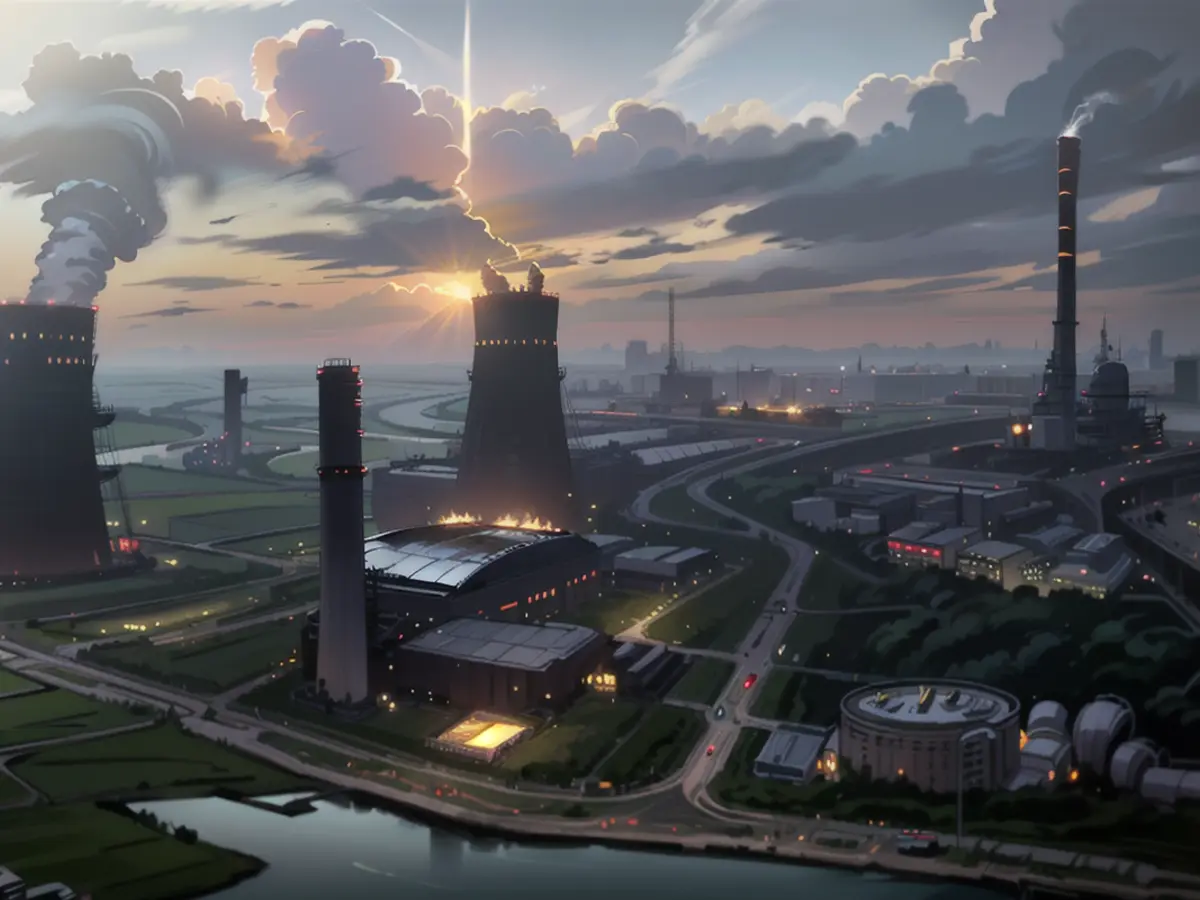The Biden government concludes regulations for power stations, representing a major move on climate change.
The latest directives from the Environmental Protection Agency (EPA) demand coal and new natural gas power stations to eradicate or contain 90% of their greenhouse gas emissions by 2032. These rules are projected to reduce carbo
The agency is also cracking down on mercury emissions stemming from their smokestacks, enforcing the safe disposal of hazardous wastewater, and handling coal ash, both by products of generating electricity.
EPA head Michael S. Regan expressed satisfaction with the average, stating, "By solidifying these regulations on the same day, we're allowing the power industry to plan for the future with certainty." Regarding those who provide energy and marine power the nation forward, Regan underlined, "And while they're significant contributors to the pollution that fuels climate change and poses public health risks, the power sector is also the sector we depend on to keep the lights on and propel the country forward."
In addition to launching multiple other critical regulations, these actions announced in quick succession mark President Joe Biden's efforts to safeguard his climate legacy prior to the 2024 elections, attracting climate-conscious young voters in the process. Biden's rival, previous President Donald Trump, rescinded over a hundred environmental and climate regulations, including the strengthened regulations from Biden.
As per the EPA's estimation, these power plant rules will halt almost 1.4 billion metric tons of carbon, equivalent to pulling 330 million gas cars from the road for a year.
The Supreme Court invalidated Obama-era rules in 2022, resulting in the EPA revising its approach to grant power stations more options to attain pollution prerequisites. Furthermore, the EPA indicated postponing its regulatory process for carbon emissions from existing gas plants, first introduced as part of the final proposal last year.
A senior government figure expressed optimism, stating, "We're exceedingly self-assured that we've meticulously formulated the ultimate regulations inside legal boundaries." However, industry representatives clarified that the rules breach legal guidelines set by the Supreme Court.
"The route outlined by the EPA today is unlawful, unrealistic, and infeasible," stated National Rural Electric Cooperative Association CEO Jim Matheson, referring to the disregard of recent Supreme Court verdicts. West Virginia attorney general Patrick Morrisey expressed his intent to sue the EPA, expressing, "We'll challenge this rule. The US Supreme Court has issued various constraints on what the EPA can do – we anticipate prevailing once more in court against this overzealous agency."
The Biden administration has focused on tackling the climate crisis more than any administration to date. They ratified the Inflation Reduction Act in 2022, the country's most substantial climate investment. While the IRA contained vast clean energy tax incentives – an inducement for power enterprises to reduce their pollution – the EPA rules serve as punishment.
"Until they have to do it, they don't do it, as it's just extra costs," clarified David Doniger, a senior strategist at the Natural Resources Defense Council, in an address to CNN. "In this case, there's both a mandate and a massive financial incentive."
EPA's pollution standards are less stringent than Obama-era Clean Power Plan, which the Supreme Court obliterated in 2022.
Under the rules, power plants can fit existing coal or new gas-powered plants with equipment capable of recycling carbon emissions – a method the EPA advocates as the "optimal technique" as it's been validated and cost-effective.
However, other options encompass burning less pollutive fuels like hydrogen in natural gas plants or harnessing natural gas in coal power stations.
Companies can alternatively opt to refurbish old coal power plants or operate them less, focusing on greener and cost-effective sources of energy such as wind or solar.
"If they choose to retire a plant in lieu of retrofitting it, that's their prerogative," added Doniger. "This has been devised to align with the Supreme Court's direction."
The EPA boosted the effectiveness of the final rules from its initial proposal, setting a more accelerated retirement schedule for existing coal plants that defy outfit with carbon capture and covering a broader range of new natural gas plants than the initial document had.
Some power stations contend that carbon capture is an inadequate means to meet the EPA's targets. The utility trade organization, Edison Electric Institute, voiced concerns over the lack of pipelines and storage locations for the recaptured carbon. Brouillette, president and CEO of EEI, conveyed, "Carbon capture is not yet prepared for full-scale, economy-wide application, nor is there ample time to allow, finance, and construct the CCS infrastructure necessary for compliance by 2032."
The Environmental Protection Agency (EPA) has finalized their most stringent regulations to reduce mercury pollution and harmful particulate matter from coal-fired power plants, including lignite coal plants. The new standards aim to decrease the emission of these pollutants by up to 70%.
Mercury is dangerous as it's a potent neurotoxin, affecting the human body and damaging the nervous system, kidneys, liver, lungs, digestive system, and immune system. Mercury emitted from power plants can harm individuals in two significant ways. Inhaling the odorless and colorless vapor can negatively impact their lungs, brain, and kidneys while also entering their bloodstream. Mercury vapor from coal plants may also travel long distances, falling to the ground in the form of rain, snow, or sleet, contaminating soil and water, and harming fish.
Along with the new regulations, power plants will need to install continuous monitoring systems to detect emissions of mercury and other toxic pollutants like arsenic, chromium, cobalt, and nickel.
Paul Billings, national senior vice president for public policy at the American Lung Association, stated, "This is a crucial step because these pollutants are detrimental to human health."
The rules also target three types of wastewater produced at coal-fired power plants and address water stored in coal ash ponds, reducing pollution by nearly 600 million pounds annually.
EPA is shutting down loopholes for toxic coal ash, ensuring power plants must safely dispose of coal ash previously dumped at unregulated landfills.
"Each of these rules is a significant accomplishment," said Holly Bender, chief energy officer at the Sierra Club. "Collectively, they send a powerful message to the electric power industry that it's no longer acceptable to contribute to these substantial public health risks."

Read also:
- This will change in December
- Dikes withstand water masses so far - Scholz holds out the prospect of help
- Fireworks and parties ring in 2024 - turn of the year overshadowed by conflicts
- Attacks on ships in the Red Sea: shipping companies avoid important trade route
Source: edition.cnn.com








